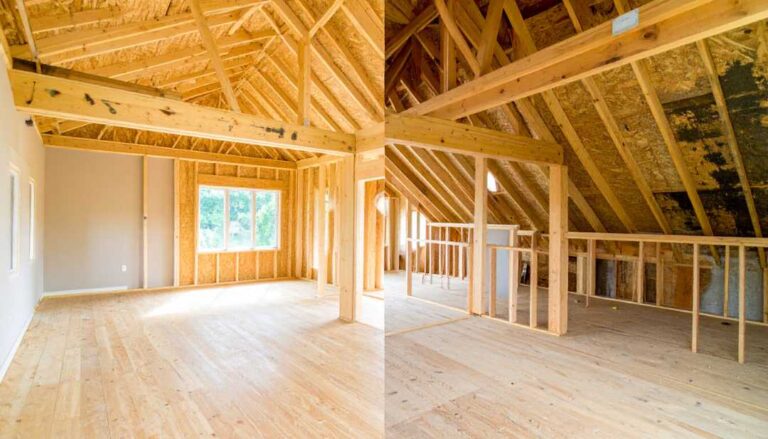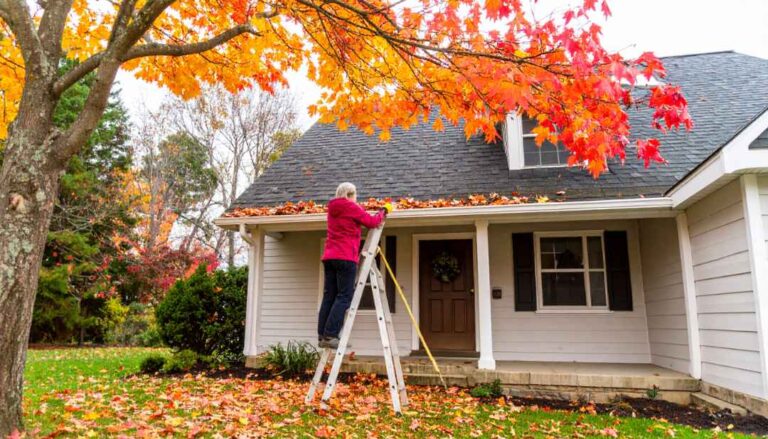Your roof. It stands as your home’s steadfast guardian, a primary shield against the relentless whims of Mother Nature. For homeowners in Illinois, where we experience the full, dramatic spectrum of four distinct seasons – from the icy grip of winter to the sweltering humidity of summer, the wet unpredictability of spring, and the blustery beauty of autumn – your roof endures a unique and constant barrage of environmental stress. Understanding how each season impacts your roofing system, and what proactive steps you can take, is not just about extending your roof’s lifespan; it’s about safeguarding your most significant investment, preventing costly repairs, and ensuring the comfort and security of your family year-round.
At Seidel Exterior Group, we’ve been serving the Illinois community for years, providing expert roofing solutions tailored to our local climate. We know that a healthy roof isn’t just about what happens during a storm; it’s about consistent care and vigilance through every changing season. This comprehensive 4-Season Guide to Roof Longevity will walk you through essential maintenance practices, seasonal inspections, and proactive measures to ensure your roof stands strong for decades to come, protecting your Illinois home no matter what the weather brings.
Understanding Seasonal Impacts on Your Roof Longevity
Each season presents its own unique challenges and opportunities for roof maintenance:
- Spring: Thawing snow, increased rainfall, and potential late-season freezes test your roof’s ability to shed water and reveal winter damage.
- Summer: Intense UV radiation, high temperatures, and severe thunderstorms with hail and high winds are the primary concerns.
- Fall: Falling leaves, heavy debris, and preparing for the cold, snowy months ahead are paramount.
- Winter: Snow accumulation, ice dams, freezing temperatures, and strong winds put immense stress on your roof’s structural integrity and waterproofing.
By adopting a seasonal approach to roof care, you can address potential problems before they escalate, optimize your roof’s performance, and significantly extend its overall lifespan.
Season 1: Spring – The Post-Winter Thaw & Renewal Check-Up
As the snow melts and nature awakens, spring is the ideal time to assess any damage sustained during winter and prepare for the upcoming warmer months.
Key Spring Maintenance Actions:
- Thorough Gutter and Downspout Cleaning: Winter’s debris (leaves, grit, ice remnants) and spring’s budding trees can quickly clog gutters. Ensure they are clear to handle spring rains effectively. Why it’s crucial: Clogged gutters can lead to water overflowing, saturating fascia boards, siding, and foundation, potentially causing leaks into the basement.
- Inspect for Winter Damage:
- Missing, Cracked, or Curled Shingles: High winds and freeze-thaw cycles can wreak havoc. Look for any shingles that are out of place, broken, or showing signs of stress.
- Loose or Damaged Flashing: Pay close attention to the metal or composite materials around chimneys, skylights, vents, and valleys. Winter ice and temperature fluctuations can cause flashing to lift, crack, or corrode, creating entry points for water.
- Granule Loss: Check your gutters and downspouts for excessive asphalt shingle granules, indicating accelerated wear.
- Sagging or Soft Spots: From a safe vantage point, look for any areas of the roof that appear to sag or have soft spots, which could indicate water damage to the underlying deck.
- Attic Inspection for Leaks & Moisture: After winter’s snow, head into your attic with a flashlight. Look for:
- Water Stains or Discoloration: On the underside of the roof deck or rafters.
- Mold or Mildew: Any fuzzy growth indicates prolonged moisture.
- Damp or Compressed Insulation: Wet insulation loses its effectiveness. Why it’s crucial: Leaks discovered early can be repaired before they cause extensive damage to insulation, drywall, and structural components.
- Trim Overhanging Branches: Before summer growth fully sets in, prune any tree branches that are touching or hanging over your roof. Why it’s crucial: Prevents abrasion of shingles, reduces debris accumulation, and minimizes the risk of fallen branches during spring storms.
Season 2: Summer – Guarding Against Heat, UV, and Storms
Summer brings intense heat, powerful UV rays, and the threat of severe thunderstorms, including hail and high winds. Your roof needs to be robust to withstand these forces.
Key Summer Maintenance Actions:
- Ensure Proper Attic Ventilation: This is paramount in summer. Good intake (e.g., soffit vents) and exhaust (e.g., ridge vents) airflow prevent heat buildup in the attic. Why it’s crucial: Excessive attic heat can bake your shingles, causing them to age prematurely and shorten your roof’s life. It also forces your AC to work harder, leading to higher energy bills.
- Monitor for Storm Damage: After every significant summer storm (especially those with high winds or hail), conduct a quick visual inspection from the ground. Look for:
- Missing or Displaced Shingles: Wind can lift and tear off shingles.
- Dents or Pits on Shingles: Hail impact can cause visible damage, which may not leak immediately but compromises the shingle’s integrity.
- Debris on the Roof: Clear any branches or large debris that might have fallen.
- Address Minor Repairs Promptly: If you notice any minor issues from your spring inspection or summer storms, address them quickly. Small cracks can become major leaks if left unattended. Why it’s crucial: Timely repairs prevent minor issues from escalating into costly problems that compromise your entire roofing system.
- Keep Gutters Clear (Especially After Storms): Summer storms can wash down loose granules and other debris into your gutters. A quick check after heavy rain is a good practice.
Season 3: Fall – Preparing for Winter’s Onslaught
Autumn is your last and best chance to prepare your roof for the brutal challenges of winter. Neglecting fall maintenance can lead to significant problems when temperatures drop.
Key Fall Maintenance Actions:
- Thorough Gutter and Downspout Cleaning (Again!): As leaves fall, gutters will inevitably fill up. This is the most critical gutter cleaning of the year. Why it’s crucial: Clogged gutters in winter are the primary cause of ice dams, which force melting snow under shingles, leading to severe interior water damage and structural issues.
- Remove All Debris from the Roof Surface: Leaves, pine needles, and twigs trapped on your roof can retain moisture, encourage mold and moss growth, and prevent water from draining properly. Why it’s crucial: Prevents moisture damage and reduces the load on your roof from wet, heavy debris.
- Final Shingle & Flashing Inspection: Perform one last detailed inspection for any loose, cracked, or missing shingles, and ensure all flashing around chimneys, vents, and skylights is secure and watertight. Why it’s crucial:Any compromised areas will be severely tested by winter’s ice and snow. Better to fix them now than face a leak mid-blizzard.
- Check Attic Ventilation & Insulation: Ensure soffit and ridge vents are clear and unobstructed. Verify that attic insulation is dry, uncompressed, and evenly distributed. Why it’s crucial: Proper attic ventilation prevents heat buildup that can lead to ice dams and keeps insulation effective, ensuring energy efficiency during heating season.
- Trim Overhanging Branches (Final Pass): Remove any lingering dead or weak branches that could snap under the weight of snow or ice and fall onto your roof. Why it’s crucial: A major proactive step to prevent storm damage in winter.
Season 4: Winter – Vigilance and Damage Mitigation
Winter tests your roof’s resilience to its limits. While major maintenance is difficult or impossible in freezing conditions, vigilance is key.
Key Winter Maintenance Actions:
- Monitor for Ice Dams: If you notice large icicles forming along your eaves, or worse, large ridges of ice, this indicates an ice dam. Why it’s crucial: Ice dams are a serious threat. If possible, safely remove snow from the first few feet of your roof using a roof rake (from the ground!). Avoid chipping at ice, as this can damage shingles. If ice dams are severe and persistent, it may indicate underlying ventilation or insulation issues that need professional attention in warmer weather.
- Watch for Interior Leaks: Pay close attention to ceilings and walls for any signs of water stains, discoloration, or dripping. Why it’s crucial: Even a small lveak can indicate significant water intrusion. Mark the spot and call a professional as soon as weather permits for repair.
- Clear Snow from Vents: Ensure that roof vents (static, turbine, or ridge vents) are not completely buried in deep snow, which can block crucial attic ventilation. Why it’s crucial: Maintaining ventilation even in winter helps prevent condensation and moisture buildup in the attic.
- Be Aware of Heavy Snow Load: While roofs are designed to handle significant snow, exceptionally heavy, wet snow can add immense weight. If you have concerns about the structural integrity of your roof, especially an older one, consult with a professional.
The Seidel Exterior Group Advantage: Your Year-Round Roofing Longevity Partner
Maintaining your roof through all four Illinois seasons can seem like a daunting task, but you don’t have to go it alone. At Seidel Exterior Group, we believe in empowering homeowners with knowledge and providing expert, reliable service for every season. Our team of experienced and certified roofing professionals is here to help you protect your investment year after year.
We offer:
- Comprehensive Seasonal Inspections: Our detailed inspections can identify potential issues before they become major problems.
- Expert Repairs: From minor shingle replacements to flashing repairs, we handle all types of roofing issues with precision.
- Gutter Cleaning & Maintenance: We can assist with ensuring your drainage system is functioning optimally.
- Ventilation Solutions: We’ll assess and optimize your attic ventilation to ensure peak performance in all temperatures.
- Proactive Replacement Planning: When your roof nears the end of its life, we provide transparent guidance and high-quality replacement options.
By partnering with Seidel Exterior Group, you gain peace of mind knowing that your Illinois home’s roof is in the hands of seasoned professionals who understand the local climate and its unique demands. Don’t leave your roof’s longevity to chance. Embrace this 4-Season Guide to Roof Longevity and make proactive roof care a cornerstone of your home maintenance routine.
Contact Seidel Exterior Group today to schedule your next seasonal roof inspection and let us help ensure your roof stands strong, protecting your family and your investment, through every changing season for decades to come.



